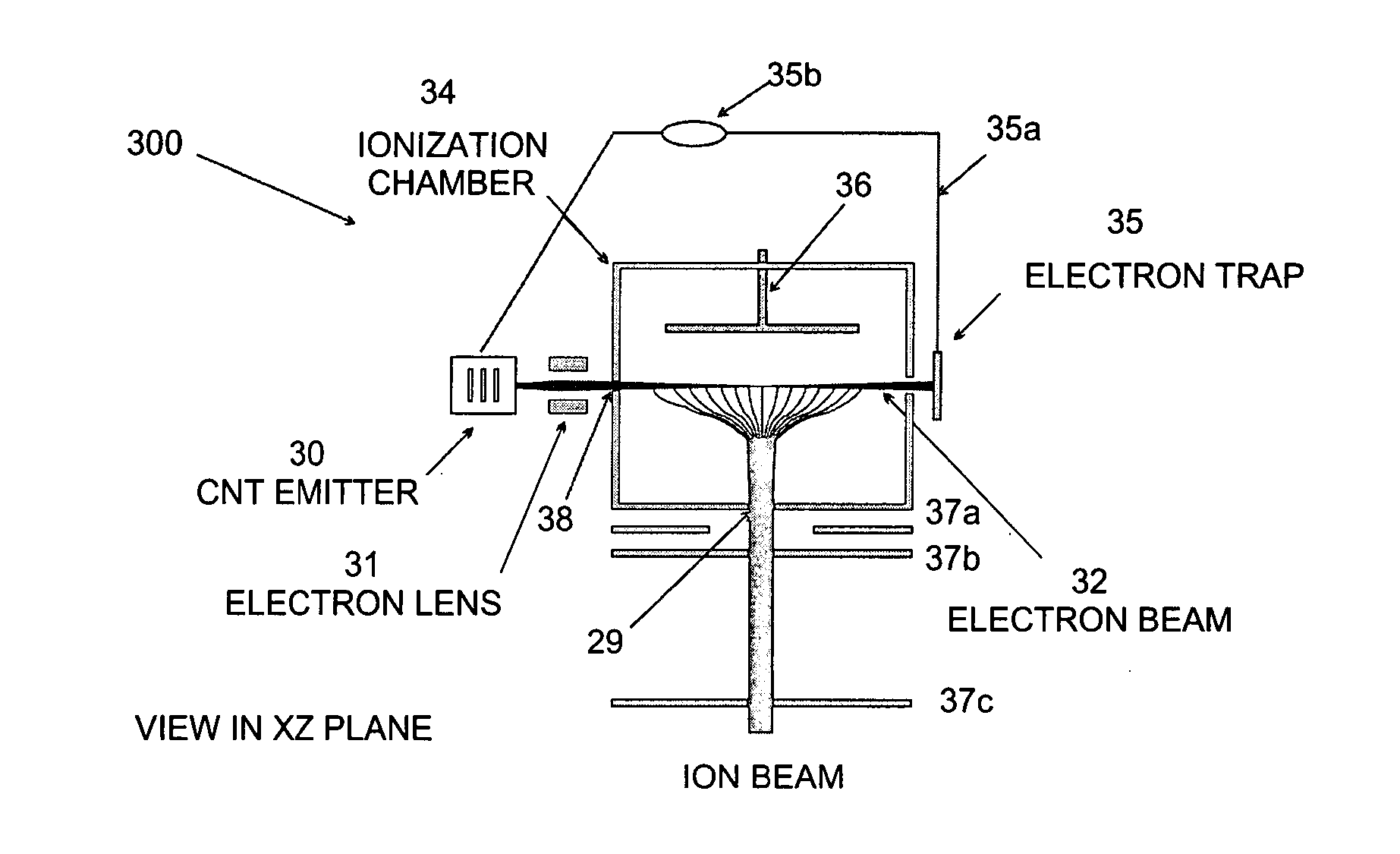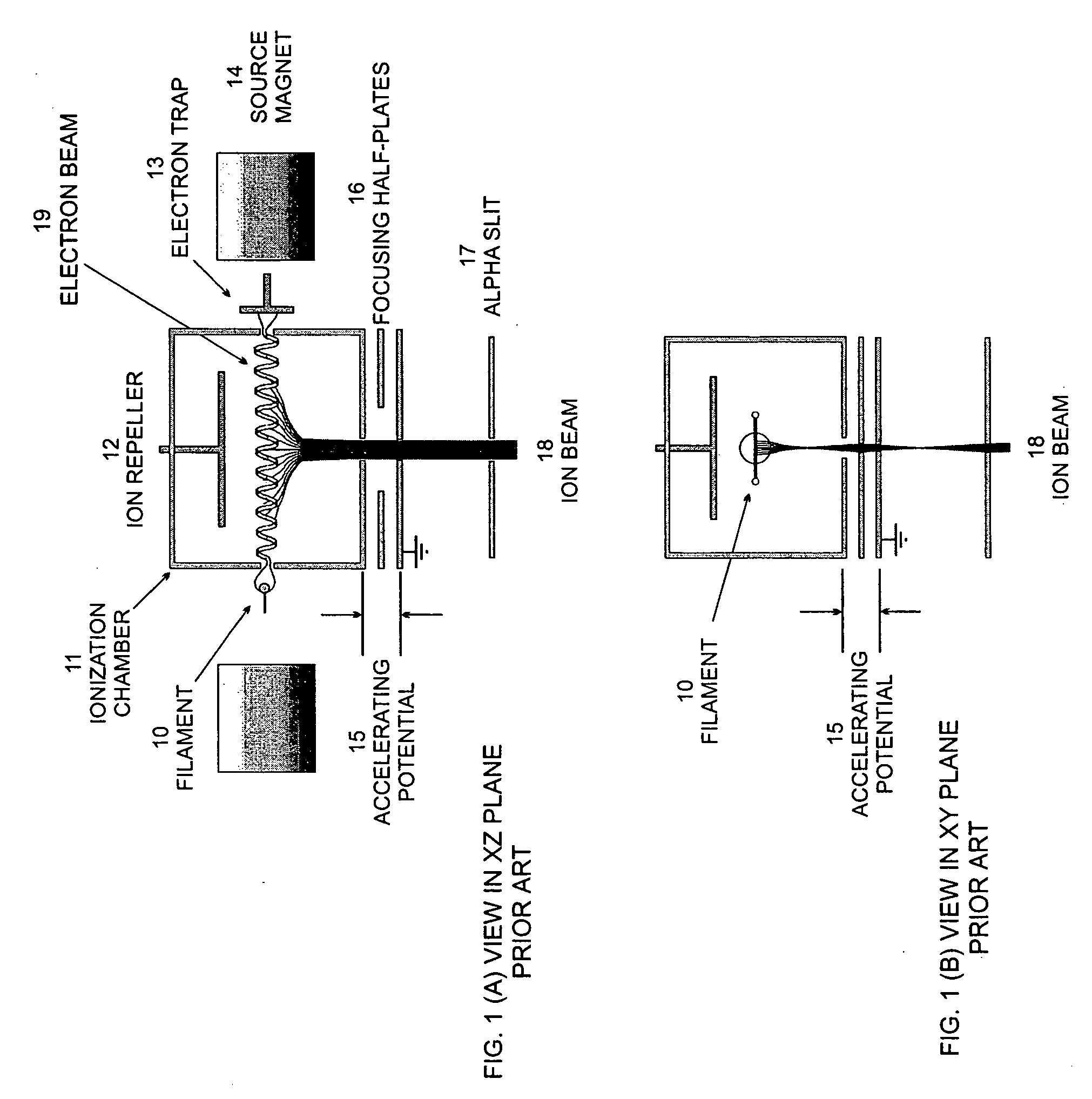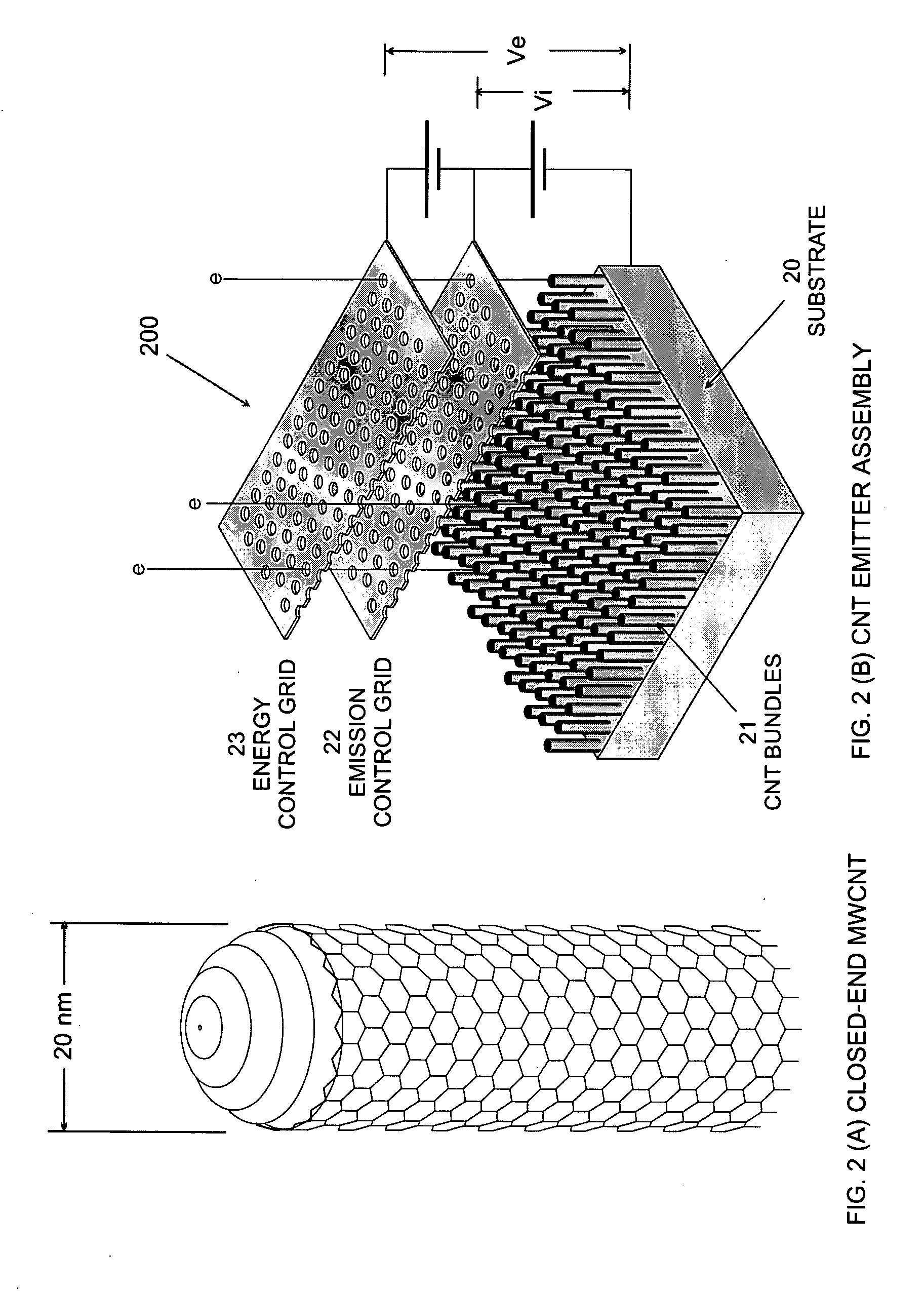Carbon nanotube electron ionization sources
a carbon nanotube and electron ionization technology, applied in the direction of instruments, particle separator tube details, separation processes, etc., can solve the problems of affecting the electron work function of the filament, affecting the lifetime of the filament, and affecting the electron work function
- Summary
- Abstract
- Description
- Claims
- Application Information
AI Technical Summary
Benefits of technology
Problems solved by technology
Method used
Image
Examples
Embodiment Construction
[0023] Embodiments of the present invention relate to ion sources for mass spectrometry. An ion source in accordance with embodiments of the invention is based on carbon nanotubes and can provide reliable electron beams for a long life time.
[0024] Carbon nanotubes (CNT) are seamless tubes of graphite sheets with full fullerene caps which were first discovered as multi-layer concentric tubes (i.e., multi-walled carbon nanotubes, MWCNT), as shown in FIG. 2A. Subsequently, single-walled carbon nanotubes (SWCNT) were prepared in the presence of transition metal catalysts. CNT have shown promising potentials in applications including nanonscale electronic devices, high strength materials, electron field emission, tips for scanning probe microscopy, gas storage, etc.
[0025] As electron field emitters, carbon nanotubes have the characteristics of low work function, durability, and thermal stability. Accordingly, an electron field emitter based on CNT can be driven at low voltage. In addit...
PUM
 Login to View More
Login to View More Abstract
Description
Claims
Application Information
 Login to View More
Login to View More - R&D
- Intellectual Property
- Life Sciences
- Materials
- Tech Scout
- Unparalleled Data Quality
- Higher Quality Content
- 60% Fewer Hallucinations
Browse by: Latest US Patents, China's latest patents, Technical Efficacy Thesaurus, Application Domain, Technology Topic, Popular Technical Reports.
© 2025 PatSnap. All rights reserved.Legal|Privacy policy|Modern Slavery Act Transparency Statement|Sitemap|About US| Contact US: help@patsnap.com



